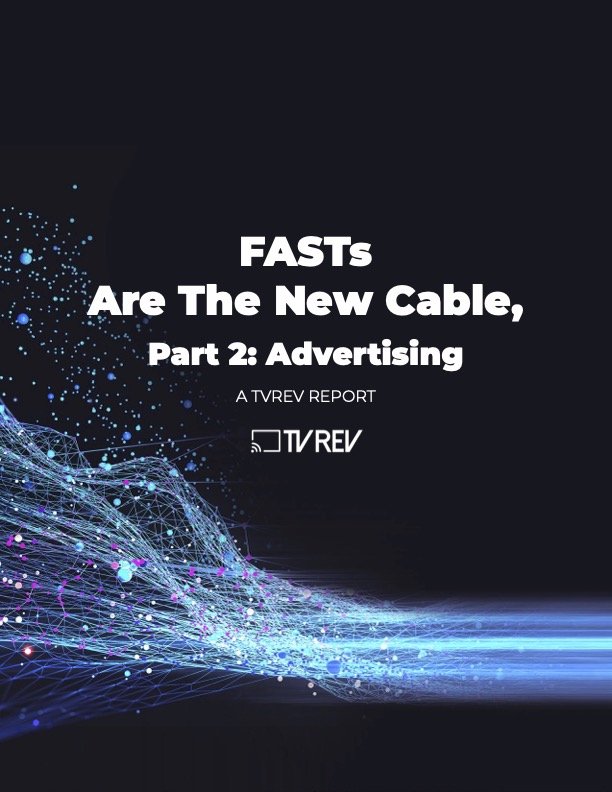How The IRIS_ID Enables Contextual Targeting On Streaming
In this new Innovator Spotlight from our Special Report, FASTs Are The New Cable, Part 2: Advertising, IRIS.TV’s CEO Field Garthwaite explains the value of contextual advertising and how his company’s IRIS_ID makes it easy for brands to identify and target contextual audiences.
“Identity data is incredibly effective when it's accurate, but it's often not accurate,” notes Field Garthwaite, CEO of IRIS.TV. “So if you have the ability instead to reach a consumer at the exact moment that they've opted in to watch their favorite comedy show, because they're relaxing or they've opted in to watch a favorite sport of theirs, that's something that is incredibly valuable if you can just tap into it at that moment. You can actually deliver superior performance, you can plan, target and measure off of it. And you can do it in a manner that's privacy secure and is going to work for decades to come.”
ALAN WOLK: Why is transparency such a big problem in the FAST ecosystem?
If you think about linear TV buyers, they're used to getting shown episode level data, which is negotiated as part of the upfront negotiations. And with these FAST services, you're not getting that level of transparency. There are a few reasons for this and it’s worth breaking it down and explaining why this has been a challenge.
It really comes down to three reasons. The first is technology. On the web, you have web page URLs, where you can store an immense amount of information. And this is where brand suitability, contextual, and all other kinds of data for measurement are stored. That makes it available, whether it's a display environment, a YouTube environment, or even a social environment
The actual ad platform, the DSP, or the SSP, has access to this URL, and then can set up data licensing agreements to access all this other enriched information.
But in streaming, there is no URL. So that's a big problem because you need some type of identifier or content ID to replace the URL. And to date, there hasn't been one that's been used across the whole ecosystem. That's the first reason.
The second is legal. Show and episode level data is something that TV advertisers are used to receiving. But in streaming, you also have things like household ID, you also have IP addresses. And when you have those datasets together, it's actually illegal to use them in the same ad transaction as a result of a law called the Video Privacy Protection Act. Which, not coincidentally, is one of the reasons why contextual is being so widely adopted by top streamers and advertisers.
The third reason is really a business reason. Even if it were legal to share all of that show and episode information, major broadcasters are still worried that their data will be cherry picked. Plus, a major broadcaster doesn't want another party like Roku selling their precious inventory and selecting certain shows. So they don't share that information in the bidstream.
ALAN WOLK: How does the lack of transparency create a need for more and better contextual data on streaming?
FIELD GARTHWAITE:. The reason that contextual is more valuable is that it is actually consistent across publishers. So an advertiser like American Express, can target viewers at the exact moment that they're watching travel, and do that across a number of different FAST channels and publishers and apps. That's a really powerful capability.
If you think about identity data, if you had different publishers with different demographic groupings, and they had different audience segments, things would never scale. So it's important to think about the streaming ecosystem today, as one where we’re really still lacking standards, which then prevents scalable buys. And that's ultimately what every advertiser wants from streaming, they want to replicate the massive reach of linear TV with the more sophisticated data and targeting capabilities of the internet.
As an industry, the reason this is becoming mission critical is that there's been a lot of news coming out of DC that data laws, like the American Data Privacy Protection Act, and new FTC regulations are going to go into effect. And these laws are going to limit the availability of first and third party data. While it’s going to be a process to shift away from those datasets entirely, it also makes it critical that content data begins to accompany those signals. Which is why contextual data is becoming increasingly important.
ALAN WOLK: Can you explain what the IRIS_ID is and how it helps with contextual targeting.
FIELD GARTHWAITE: The best way to think about the IRIS_ID is that it is the equivalent of a webpage URL on streaming, where we're minting and creating a new ID for every video asset that comes into our platform. So when we work with a new broadcaster, and they essentially have every show and episode, and even have clips or highlights, every single one will get a unique IRIS_ID. This is important because you actually might have TV shows or movies where you have one version that’s been edited for linear TV with all the racier parts taken out, one that’s been edited for streaming with those parts left in, and they'll have different data sets associated with them.
What we do when we mint this unique ID for every video, is we then connect the publishers to almost 20 different data products for things like contextual brand suitability, logo detection, and measurement. And we're storing all of that information on every IRIS_ID.
We take the publisher's metadata, normalize it, and then share all that enriched data. But it’s important to note that the content owner has complete control over what they do with the IRIS_ID. So it allows for this standard of connectivity, but it also allows them to pick and choose how they're using it.
That’s because the IRIS_ID can't be used until it's unlocked. And it's unlocked by companies who have permission from the publisher and a data partner to access specific data.
What that does is it really gives the publishers much more control than they'd had historically on the web, because historically, all that data was collected via web page scraping which was all taken to the buy side. Then the publishers were left having to see what buyers wanted to purchase, without having any control over their own data. So that's a major part of the shift that's happening now in streaming— content owners now have a lot more control over the data that they're putting out in the ecosystem.
ALAN WOLK: Is there a measurement play for the IRIS_ID?
FIELD GARTHWAITE: Gracenote and Nielsen have incredible technology in the traditional linear TV space, where you have set TV shows and movies, so there's almost always going to be a Gracenote ID for that.
But in the streaming ecosystem, in the FAST ecosystem, there's a lot of content out there that doesn't have a Gracenote ID. So measurement is one of the most exciting use cases that we're focused on with the IRIS_ID, because it solves critical problems for major broadcasters, but also just makes it easier for advertisers to use whichever measurement provider they want, which is going to be critical as the measurement ecosystem for streaming is rapidly diversifying. So with the IRIS_ID, you will have a consistent content signal that gives advertisers fidelity on where their ads ran.



